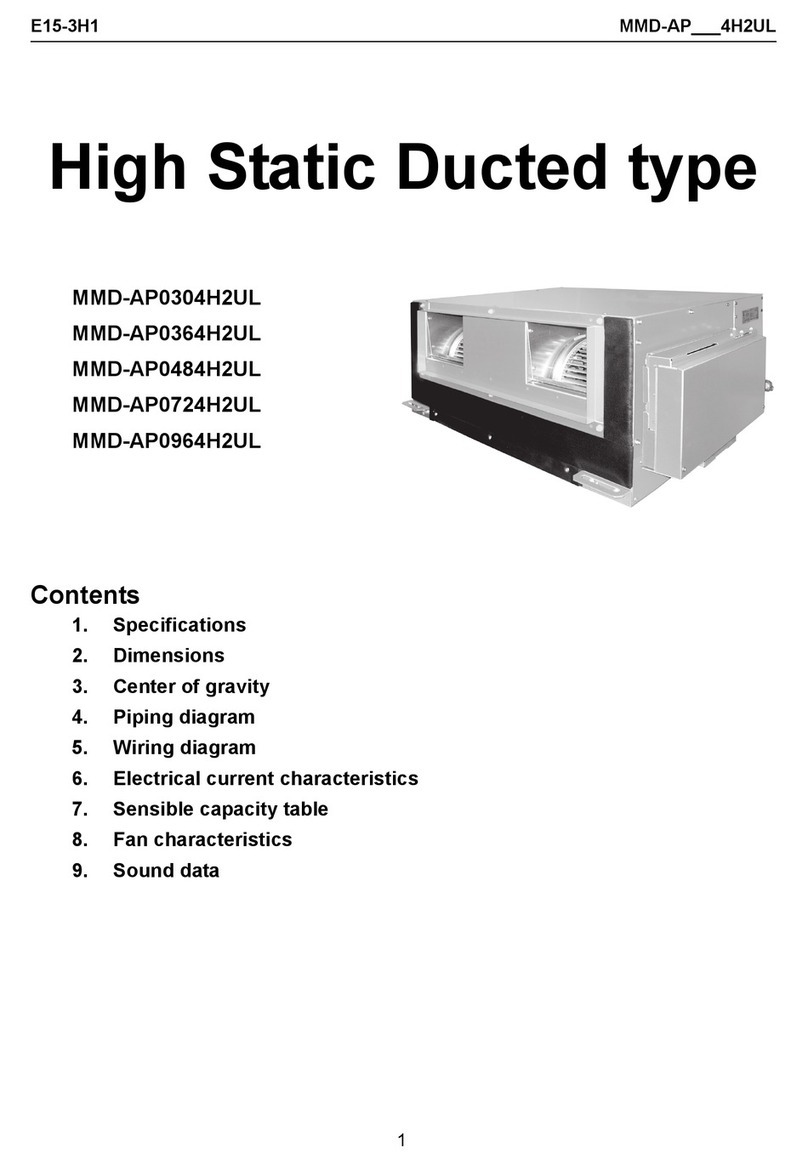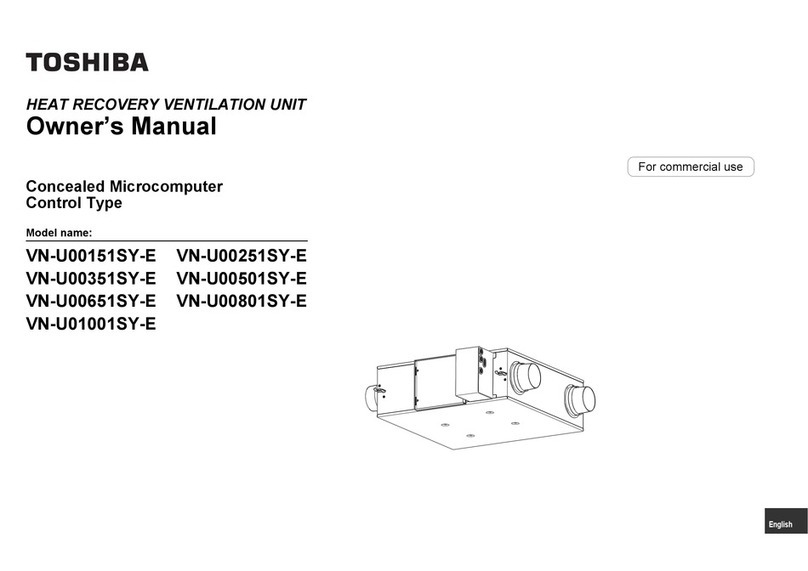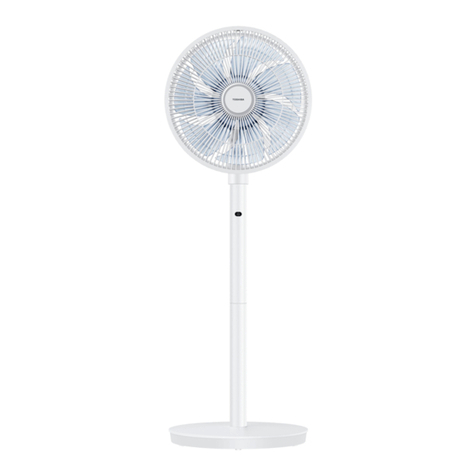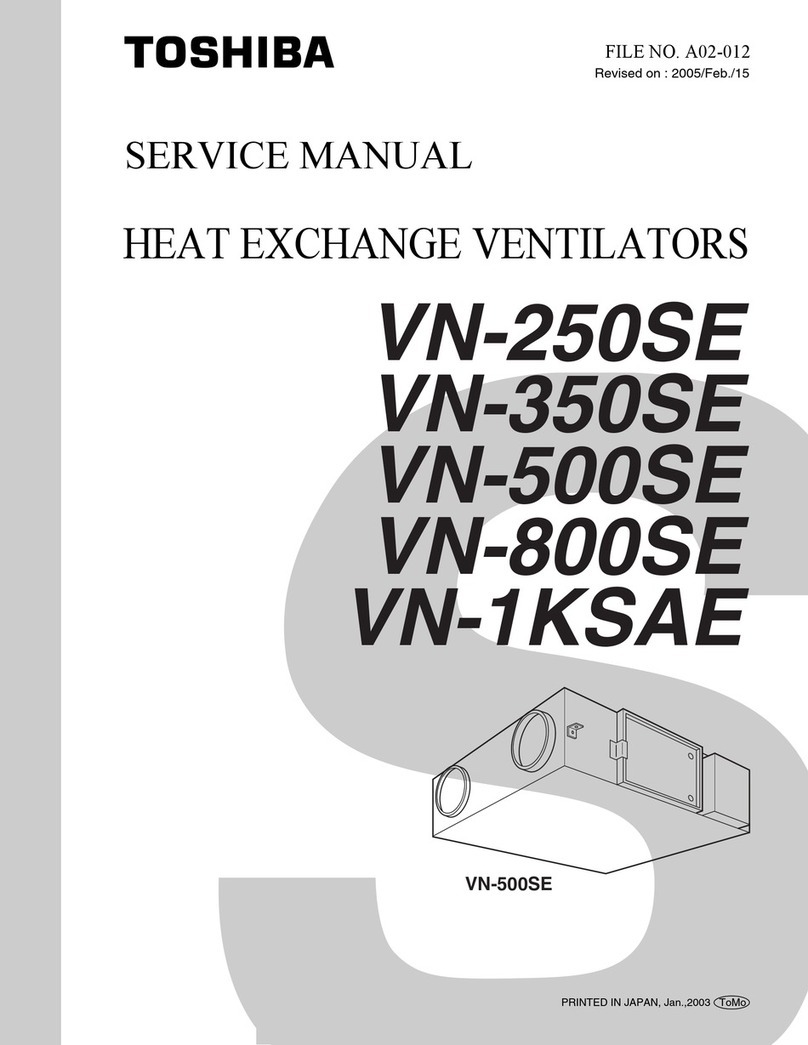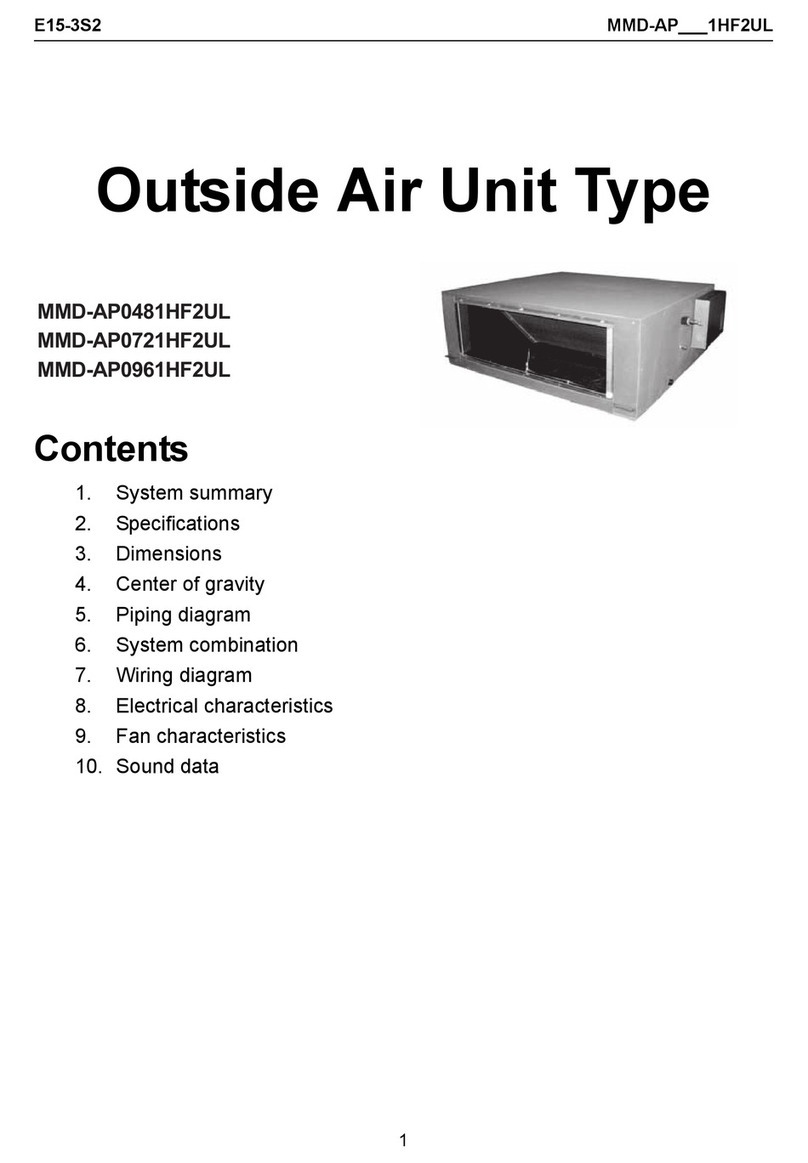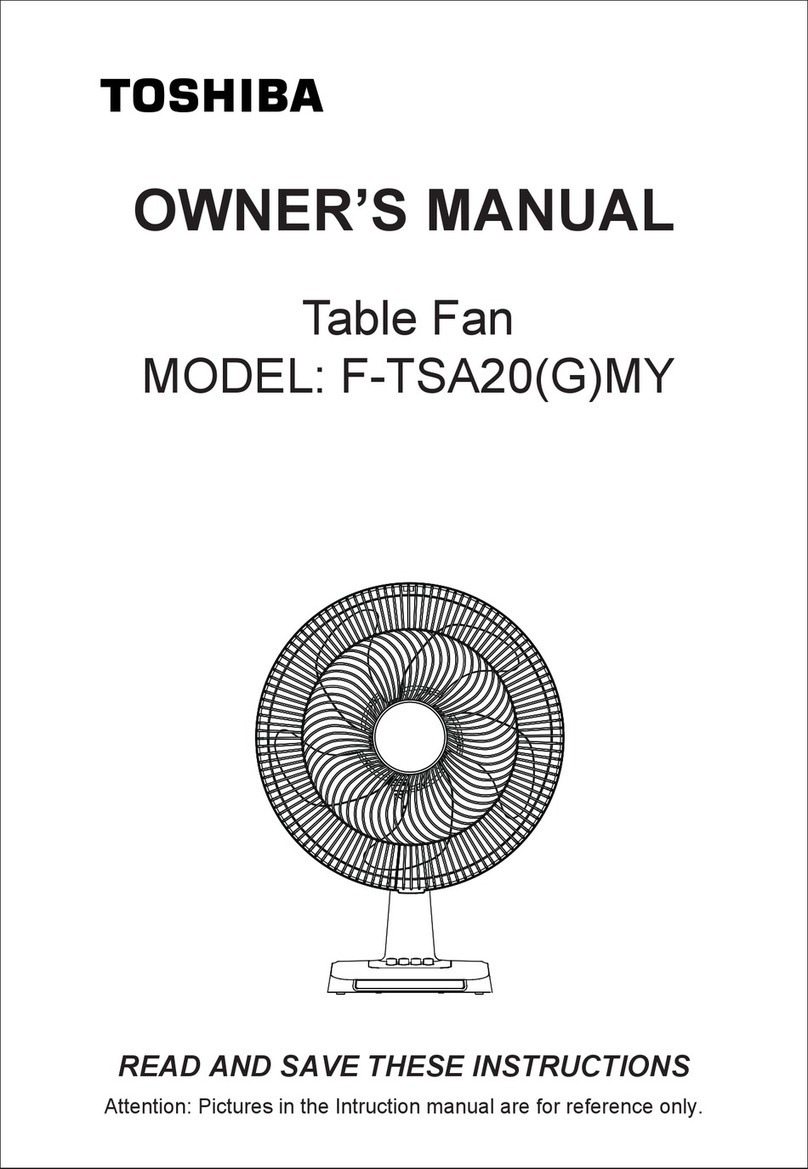
3
ENGLISHFRANÇAISDEUTSCHITALIANOESPAÑOLNEDERLANDSPORTUGUÊSΕΛΛΗΝΙΚΗ
Cautions on Safety
Cautions for Installation
WARNING
■When Heat Exchange Ventilators are
relocated, contact your dealer or a
professional installer.
Improper practice of
installation could cause
a drop of the unit, a
water leakage, an
electric shock or a fire.
●Ask the sales office or the
engineering shop to perform the
work.
■The external air intake opening should
be positioned away from the exhaust
openings of combustion gases etc.
The intake of such gasses
could lead to a lack of
oxygen in the room.
■The external air intake opening
should not be positioned where
discharged air may directly enter it.
A situation like this will
lead to the room being
contaminated and this
may pose a health risk.
Cautions for
Maintenance Cautions for Operation
WARNING CAUTION
■When the system is checked and the
power cable undergoes maintenance,
stop the operation, and switch the
exclusive circuit breaker "OFF".
The internal fan is revolving at high
speeds and can cause serious injury.
And when using a stepladder, etc.,
make sure to fix it properly.
■Combustion apparatus should not be
placed allowing a direct exposure to
wind of Heat Exchange Ventilators.
Incomplete combustion
could occur on the
apparatus.
■Don't blow directly towards animals or
plants.
Likely to cause bad effect on animals
and plants.
■Don't put a container of water on Heat
Exchange Ventilators.
When water spills, it is
likely to enter inside the
unit and degrade electric
insulation, possibly
resulting in an electric
shock.
■Do not wash Heat Exchange
Ventilators with water.
It could cause an electric
shock.
■Do not handle switches with a wet
hand.
It could cause an electric
shock.
■If Heat Exchange Ventilators are not
used for a long period of time, switch
the exclusive circuit breaker "OFF" for
safety reasons.
If the power is left on, any build-up of
dust could cause a heat generation or
a fire.
■It is strictly prohibited to place a
container of combustible gas or liquid
near Heat Exchange Ventilators or to
spray it directly with the gas or liquid.
It could cause a fire.
■Do not use outside the rated voltage.
It could cause a fire or
an electric shock.
Never Fail to Observe
Prohibited
ON
OFF
Prohibited
Prohibited
Prohibited
Keep from
water
Don’t touch
with wet hands
ON
OFF
Prohibited
Prohibited
VN250_OM-01EN.fm Page 3 Thursday, September 8, 2005 10:31 AM
